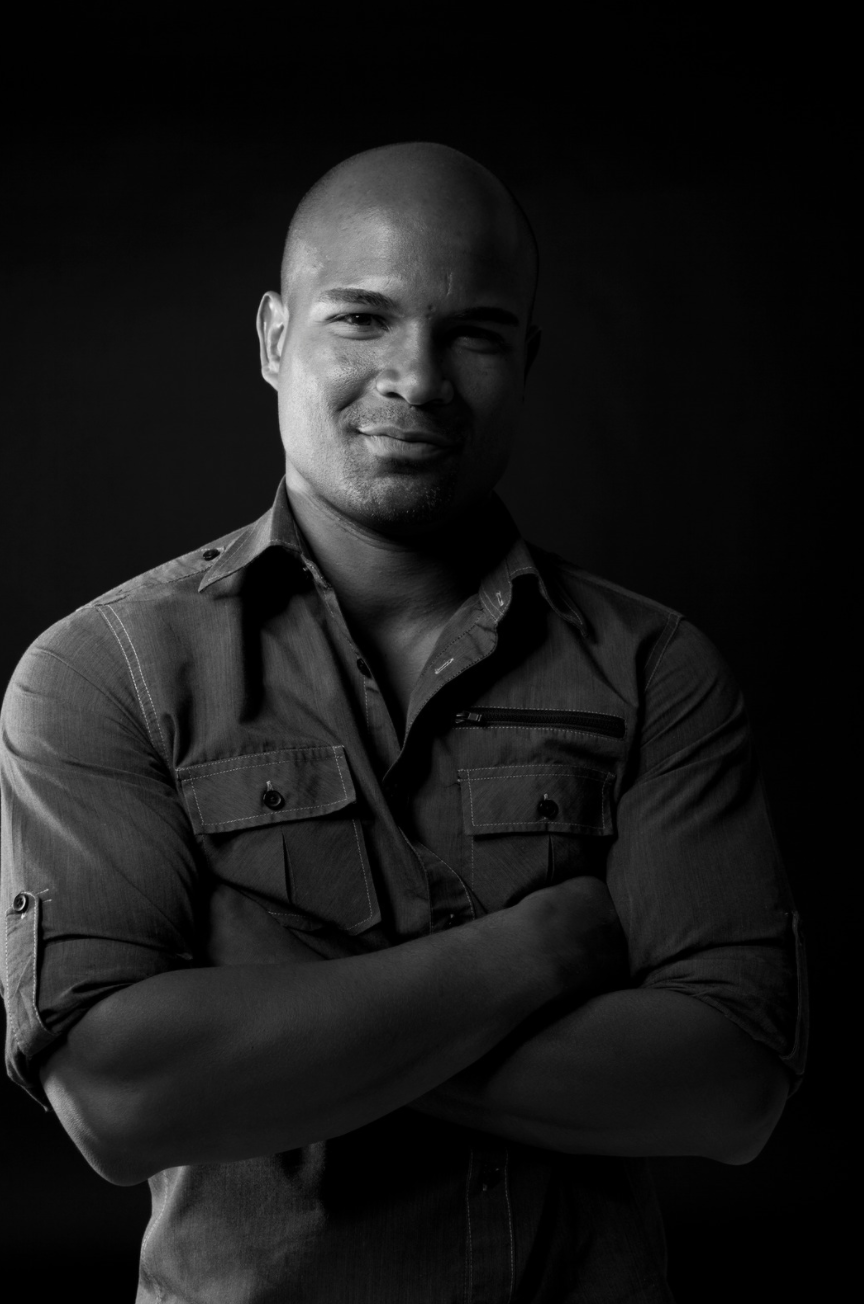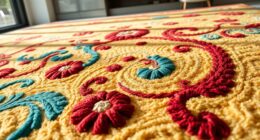AN INTERVIEW WITH ULI BARONOWSKY (FOUNDER AND PRODUCER)AND STEPHAN LEMBKE (CO-PRODUCER) OF GALAXY INSTRUMENTS
by Thorsten Meyer
Uli Baronowsky and Stephan Lembke from Galaxy Instruments did take the time out off his busy schedule to provide some insights and background information about Galaxy Instruments and their virtual instruments which help some many to write inspiring cinematic music.
Thorsten Meyer: Stephan and Uli, first of all, thank you so much for taking the time out of your busy schedule. Would you be so kind and tell us a bit about yourself and how Galaxy Instruments started out in the business?
Uli got into the whole sample production business as a freelance recording engineer, where he was doing sound for Best Service’s “Artist Drums” drum library. Since the recordings took place at Galaxy Studios in Belgium, the in-house Steinway D grand piano was the next project, where Uli got more involved with sample library creation and this became the first Galaxy Piano product, the Galaxy Steinway. Stephan has a sound engineering background as well and started out in the world of sampling by assisting Uli in the post-production process of earlier sample projects. After the Galaxy Steinway II piano collection and the Vintage D, a sound design tool based on fx-convolution was released, called Galaxy “X”. That was when the name changed from Galaxy Pianos to Galaxy Instruments and the company got more diverse.
Tell us a little more about the team behind Galaxy Instruments?
Galaxy Instruments is a small company, consisting of Uli, the main producer and founder. Over the years Stephan has become more involved, starting out as an assistant for the early 5.1 projects (Galaxy Steinway 5.1 and Artist Drums 5.1 in cooperation with Best Service), “The Giant” and “Rise & Hit” and became a co-producer with The Definitive Piano Collection project. Since 2016, Achim Reinhardt is supporting the team in all kinds of tasks and is especially skilled with programming and multimedia solutions. The Kontakt scripting is carried out by Klaus Baetz and Ingo Hermes takes care of the graphics (be it the Galaxy Instruments website or the Kontakt GUI) and is also assisting on various occasions.
Many considered Una Corda as one the leading custom-made contemporary pianos. How was the feedback that you received after releasing Una Corda?
Well, the feedback was great. We all know the sound of upright pianos and various brands of grand pianos, but the Una Corda is something new and exciting. Especially with the additional features we’ve included like the felt or cotton preparation Una Corda has a distinctive sound. It’s just fun to play with. And for us, it’s the most exciting of our libraries to play with from time to time.
Una Corda is based on a specifically developed and hand built Klavins Una Corda 88’ modern upright piano. Some may not know Una Corda, could you talk about what makes the Una Corda so special?
Una Corda is an Italian term, describing the function of a grand piano, where the hammers are moved aside (via a fourth pedal), so they would only hit a single piano string to generate a tone for each key. The result is a very clear and distinctive tone without the “beats” or movement of the frequencies, when more than one string is hit. The Klavins Una Corda 88 does not have this pedal, but instead just uses a single string for each key permanently. Also, the Una Corda includes a mounting fixture to place materials between the hammers and the strings in a manner, that is inspired by Nils Frahm’s use of the upright piano. By losing the usual wooden enclosure of an upright, the Una Corda weighs around 100 kilos and is thereby a (rather) portable version of an upright piano. However, transporting it up and down the stairs in our studio a couple of times, we still need a professional piano mover to feel safe handling it.
Some months ago the Una Corda was listed for sale on Ebay. Where is the Una Corda these days?
Yes, that’s right. David Klavins set up shop in Hungary after moving down there for a different project and closing his “Piano Manufaktur” in Balingen, Germany. He wanted to sell it in order to found his new operation, but in the end eBay was not the right place to do so. Now, the Una Corda is still in our studio (you can see the instrument standing in the back of the vocal booth in the making-of part of the walkthrough video for Thrill) and we have bought it from David to help him out.
Una Corda has been released in late 2015 and many tracks have been written with it, could you share your Top 5 tracks that use Una Corda?
Actually, we haven’t closely followed the releases of music, that are based around the Una Corda. But we heard from many (pop) music producers, that they use Una Corda in many of their tracks as a special “texture” sound. So you don’t identify it as being the unique sound of Una Corda, but it helps to support the arrangement a lot.
You offer a large range of different pianos, all together nine pianos including Una Corda, The Giant, The Grandeur, The Maverick, The Gentleman, Vintage D, Bösendorfer Imperial 290 grand, Steinway Model D 270, and Blüthner Model 150.
How do your pianos differ from each other and when would use one over the other?
Wow, that’s a big question with more than one short answer, but let us try to answer it.
Like stated before, the Una Corda is very unique in its sound by having a clearer tone and rather guitar-like attack. The cotton and felt preparations give this instrument an distinctive edge and encourage creativity. In comparison, The Gentleman, an old but all original Bechstein Upright has a very warm, soft and full tone with the usual upright characteristics. It features special grand-like mechanics and that’s why it has a very wide dynamic range. The Maverick is a smaller grand piano with a rather uneven tonal distribution, or you could say that every key has its own character. The resulting sound of playing The Maverick is very inspirational and it caught our ears in the shop, when we were looking for something completely different. But that’s how it often goes.
Comparing our virtual pianos based on Steinway & Sons D series grand pianos, The Grandeur has a more open and uniform sound than the Vintage D, that’s why it fits a modern, compressed piano sound in most cases. The Vintage D gets much love for its characterful, intimate, singing and warm tone and very inspirational sound. It’s at home in many styles, including jazz, pop and especially solo piano performances. The Galaxy Steinway D is kind of in between The Grandeur and Vintage D. It was recorded at the high-end Galaxy Studios in Belgium and is also available in a beautiful 5.1 surround version.
The Giant is a one-of-a kind instrument, also created by visionary piano builder David Klavins. He envisioned a huge upright to be a rather perfect version of a large grand piano and that’s why he created this instrument. Its bass is unbelievable and the sheer power of the tone developing from the huge soundboard makes it a very special instrument. With this one, we also created a cinematic version, that includes various piano fx by “mistreating” the instrument a little bit.
The Vienna Grand (based on a Bösendorfer 290) offers a low octave going down to C0 and is a very powerful and deep instrument. The dynamic range is impressive and it adds a different flavor to the arsenal compared to a Steinway D for example. The German Baby Grand, being based on a Blüthner Model 150, is a very nice vintage sounding mini grand. It sounds smooth and intimate, which is perfect for ballads and solo performance, that do not need the power of a nine foot grand. It’s very different compared to our other piano models
Many are not so advanced when it comes to sampling pianos for virtual instruments. Which of the earlier pianos was the most challenging one to sample?
The most challenging was The Giant, since it has a gallery, which divides the soundboard in two large areas. The area where the players sits, seems like a rather normal upright piano in size, but the bass strings extend below the gallery. We had to position a couple of similar microphones at different locations of the soundboard in order to get a realistic image of the sound without being to far away from the whole instrument.
After the Una Corda and eight other pianos in your arsenal which piano would be instrument you would love to add?
There are always many interesting instruments on our minds, but we can’t reveal too much about it. Fazioli and Yamaha make great grand pianos we haven’t touched so far. Also, The Gentleman is our only upright piano and there are so many characterful options out there, it’s crazy. But we don’t have a concrete project lined up at the moment.
You partnered with Native Instruments on Una Corda, Rise & Hit, THE GIANT, The Definitive Piano Collection, and now your newest product Thrill. Which project was the most challenging one?
Well, the piano library productions were pretty straight forward for us, even with all the improvements and tweaks we made over the years. The Giant Cinematic and Una Corda got additional features, but these libraries are still based on physical instruments. With Rise & Hit we got more into the realm of hybrid sound design and orchestral content, but the direction of the instrument (creating timed tension) was still pretty clear. Thrill turned out to be a real challenge, since there were so many factors to consider and features to create. The production time of Thrill was also way longer, than we expected and it exceeded all the previous libraries.
Let’s focus on your newest instruments Thrill. How many Instruments and sound sources did you include?

The heart of Thrill is divided into two categories. There are orchestral recordings on the one hand and hybrid sounds on the other. We recorded a 80 piece symphony orchestra divided in its sections, so there are low and high strings, brass and woodwinds. We also did a session with a double string quintet and a very diverse orchestral percussion session with various instruments. The orchestral content features all kinds of special playing techniques resulting in orchestral effects, diverse clusters and dynamic ambiences.

For the hybrid sound design content we recorded all kinds of musical instruments, ranging from a Zitter over bowed and beaten Guitars to various percussion instruments.

We also recorded special sound fx to mangle them into “thrilling” atmospheres. Therefore we used all kinds of metal objects and other materials, that resonate nicely and have lots of overtones. We also included indoor and outdoor field recordings, modular synthesizers and custom made instruments, that were specifically recorded and designed in a very dynamic way, so that they work as an atmosphere within Thrill.

How and where do you capture and record the included instruments?
The orchestral recordings were produced in Bratislava, Slovakia. The studio was Studio 1 of the Slovak National Radio, a beautiful recording space with a nice and controlled reverb tail.

As far as recording setups go, we used two decca tree setups and various close and room microphones. In Thrill there are three mixes available, the main mix (mainly decca tree with some portions of the other positions), a close and an ambient mix. The source sounds for the hybrid sound design were captured in various studios in the Cologne area, as well as out in the “field” and in all kinds of weird places like factories and abandoned buildings. So there’s a lot of vibe in the sample themselves.

When recording the Thrill, who did perform the instruments and helped to record them?
The orchestra was the 80 piece Bratislava Symphony Orchestra conducted by David Hernando Rico, Martin Roller was the recording engineer. The scores were developed and orchestrated by Stefan Behrisch, in close coordination with us.

How long did it take to collect and process all the sounds and samples needed for Thrill?
That’s a tough question, because we’ve been collecting sounds for a long time. But all in all the content creation might have taken about nine months, without counting all the preparations for the orchestral recordings we did in August 2016.

For how long did your team overall work on Thrill?
From the first demo to the finished installer it was roughly one and a half years.
What are the challenges when producing Thrill?
There were many challenges concerning the various aspects of the development process. One important aspect was to get all the dynamic blend curves right. Since there are so many stages, which influence the behavior of the overall dynamic and volume, this took a really long time to implement.
Thrill seems to be less a musical instrument and more of a performance effect engine, which is based on real instruments and additional sounds. What was the thinking behind your approach?
The main idea was to combine orchestral effects with designed hybrid atmospheres and create an instrument, that let’s the user perform the sound dynamically.

I found that the XY-pad is great to blend between the instruments played. It makes it so easy to use and gives you great results.
Yeah, that’s the main control of Thrill and you will always get unique results, since you perform your atmosphere or cluster sound in real-time.
We used TouchOSC and the Leap Motion controller to blend between the Thrill sounds. I got some questions from other readers if non-iOS devices (for example Android or Surface) would be supported as well?
Yes, of course they are. Thrill (to be exact Thrill running within Kontakt) is using the midi control changes to control the X- and Y-axis of the XY-pad. These two parameter are freely mapable on the master page. So basically every midi-controller, that can send out midiCCs is compatible with Thrill. TouchOSC has an Android version, I’m not sure about midi controller apps for Surface though.
Why would you position the tone cluster generator as the most powerful to be found in a virtual instrument?
Yes, absolutely. The Cluster Designer is capable of creating clusters consisting of nine tones within a range of 14 halftones. Every note can be individually edited in volume, panorama and tuning. Also, there are three modes, that behave very differently: In “Glide” mode all tones start unison and glide (or glissandi or portamento) to their respective value tuning-wise. “Add-on” starts with one tone and adds all the others in, when the sound gets more intense (the Y-axis increases). In “Parallel” mode all tones start with their values and increase in intensity (and usually also volume). This way many different flavors of cluster sounds can be created.

Anything we did not cover on Thrill?
As you said, it’s just great to use the XY-pad for blending the sounds and instantly creating a dramatic and very dynamic atmosphere. There are lots of features to show and try, but it’ll take a whole manual to explain, so better have a detailed look at our walkthrough video on Youtube.
Is there a sound or style that you did see lately as an upcoming trend?
Sound gets very diverse nowadays. There are so many possibilities with software instruments and sample libraries, so that even small productions can make use of a wide variety of sounds and styles. Often it’s the mixture of hybrid sound design and music composition (in a band or a classical sense). And everybody is looking for something new and unique to combine the traditional techniques with.
You recorded your virtual instruments in many different studios and locations like Saal 3 in Berlin, Galaxy Studios, Belgium or Hansahaus Studios in Bonn. Is there any recording studio you would love to use for one of your next planned instruments?
There are so many beautiful recording studios out there, but we’re quite set at the moment and don’t have special plans. Since Galaxy Studios are built so perfectly in terms of keeping the noise outside, it would be great to go back there at some point.
Would you be so kind and share your experience on what to look for when recording your own samples, be it pianos or other instruments?
There’s no easy and short answer to this question. The quality of the source (the instrument) must be good to start with. There shouldn’t be any noise to clutter the desired “pure” sound of the source. It’s best to have a professional musician, who knows the sound of the instrument assisting in the selection process. Also, when it comes to the recording, the recording space needs to be quiet, so there are no distracting external noises.
Where do you place the microphones?
We usually have many different setups in closer and further distance, so we have many options to choose from in the mixing process. However, in most cases we would record the instruments exactly the way, that we would record it within a music recording. Additional microphone options are mainly used to amplify the details of an instrument, which is usually impossible in a common music recording.

If someone wants to record for his own private library and uses only one microphone, where would you place it?
Try to find a good balance between the close and controlled sound of the most important aspect of the instrument and the rather natural distant sound of the instrument in the recording space. Also, you can capture some great “character” sounds with a single microphone, this can be a very creative and interesting approach.
Any microphone on a budget you would recommend for close and wider recoding?
When sampling, it’s also important to keep the self-noise level of a microphone in mind. There are large diaphragm budget microphones from Røde, that have similar noise characteristics compared to higher priced Neumanns. That’s a good start.
Could you recommend a microphone on a semi professional level?
The self-noise is still relevant here as well, but with the higher budget there are more options and different sound flavors to choose from. Large diaphragm microphones come from all kinds of good manufacturers, but if small diaphragm condensers are desired, the Sennheiser MKH series would be the way to go noise-wise. However, they’re not really on a semi professional budget.
When sampling at the loud level pianos and other instruments can sound very synthetic. How do you manage the recording and samples to sound like a real instrument?
That’s mainly done through the selection of the samples after recording them. We record way more dynamic layers, than we would need to create an instrument. For example, the Una Corda features 18 velocity layers per key, but we’ve recorded around sixty samples for most of the keys. This way we can select a nearly perfect dynamic behavior of the instrument later on, after mixing and editing. If it gets to harsh or unnatural, the sample is just not usable and so we would leave that out.
How many round robins would you recommend, does it vary by articulation or used instrument?
This aspect absolutely varies. The faster the musician would typically play repetitions on the instrument during a musical performance (like it is the case with drum rolls), the more round robins you need. However, the least would be three versions of a sample to make a performance feel more natural. With drums, this would easily go up to five sample versions for a snare drum. The users of virtual instruments are more sensitive to this issue nowadays, so the instruments have to keep up. Pianos however, are rarely performed playing a repetitive dynamic on the same key, so we don’t feel that there is such a need to do round robins. When you look at your midi piano performance, you won’t find two identically note-on events.
How can a boomy low-end or too top end sound be prevented?
It all starts with the recording of the instrument. If this sounds great in the recording space and the microphone/preamps combination works for the desired sound image, you shouldn’t have to worry about these issues. With a boomy low-end, you could always cut a bit of the low-mids or lows if necessary, but this depends in the sound you’ve recorded.
When the sound is captured which tools, software and hardware are part your post production process?
This depends on the nature of the project. With the pianos, there’s hardly any processing. Most of the mix comes from a combination of the various microphones we’ve recorded. To keep the phase intact and avoid comb filtering, we use very short delays on some of the signals. The most used tools there is the sample delay plug-in from Pro Tools or the new Eventide Precision Time Align. Then there’s a limiter, which is solely used to normalize the level and it is set so it doesn’t do any gain reduction. With Una Corda we did a little more processing for the felt and cotton version and we added a Chandler Curve Bender equalizer for those duties.
With libraries like Rise&Hit or Thrill, there are so many creative tools involved in the sound design process. Zynaptiq’s Adaptiverb is a great resource for special artificial reverb, so is Eventide’s Blackhole. Soundtoys are also great for creative fx and we use Waves, McDSP and UAD for the “bread & butter” duties. So we have tons of plug-in options to choose from. Hardware wise we use some tools to process sound before they get into Pro Tools. For example, most of the modular synth sounds for Thrill went through a chain of the API 2500 bus compressor, a Thermionic Culture Vulture saturation fx and a Pendulum Audio PL-2 limiter. But, that’s just one example of all the options, that can sound great.
Could you let us in on your favorite and most used tools in your studio, both analog and digital?
We are running Pro Tools HD systems with lots of plug-ins. One of the most important digital tools for a sample production would be iZotope’s RX noise reduction, so the samples can be optimized and in some cases even repaired. We mainly use analogue tools as a front end when recording, which comes down to many microphone and preamp options. There we have two Chandler REDD.47s, eight channels of GML, two Neve 4081s, an API 3124+, Focusrite, Millennia and many more. So there’s always a little shoot out involved before starting a recording session.

Would you be so kind and share your number one tip to create the custom sounds like you did create for Thrill?
Get creative and try something new. Don’t think that a recording has to be made in a multi-million dollar studio like Galaxy, but just record something and see how far it will take you. Number-one tip: Manipulate the speed of the recording before further processing.
Could you share some insights about your next project you’re most excited about?
We hope that this project will involve orchestral recording and hybrid sound design in a way that Thrill did. However, it will have a different focus and we’ll have to get deeper into a single category of sound sources. We can’t say more at the moment and that’s also due to the fact, that we’re still exploring different concepts. We’ll see where this will take us.
Thank you for your time.









